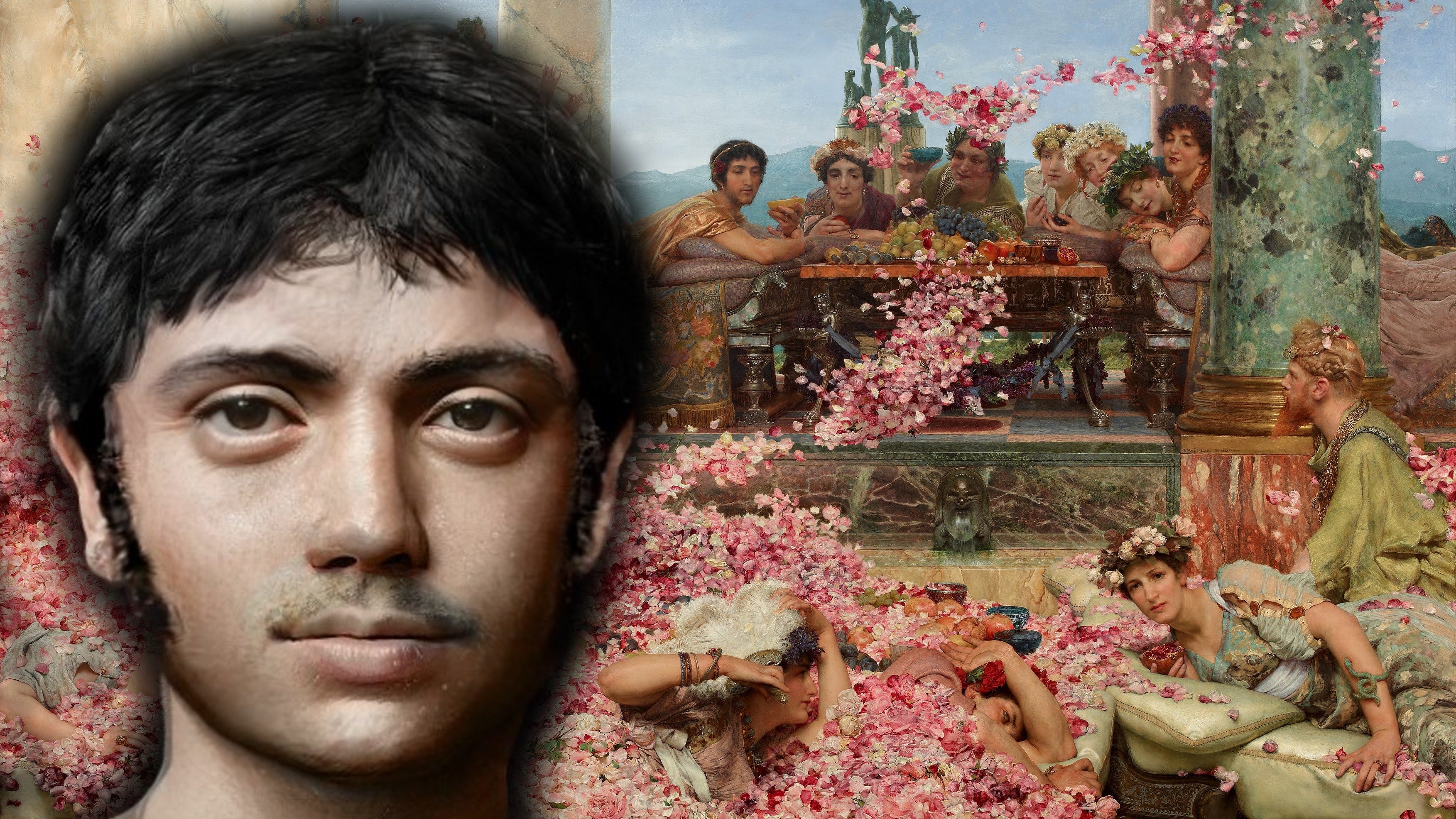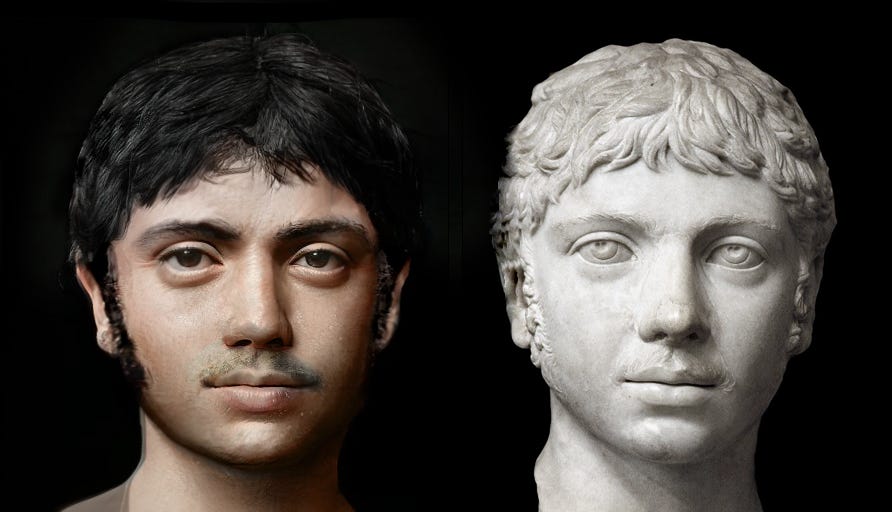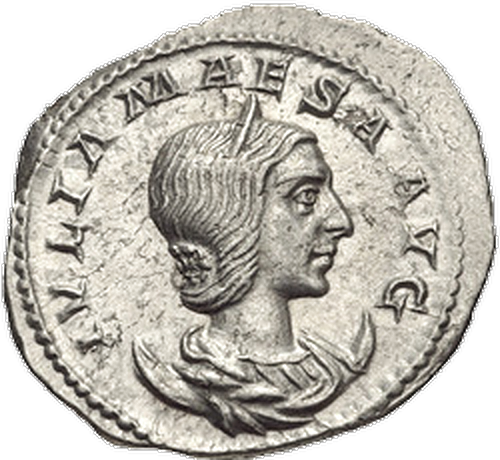|
Ocnus.Net Research Call me not Lord, for I am a Lady
However, teenage Emperor Elagabalus (204–222) shocked even the Romans. In a society that worshipped masculinity above all, Elagabalus’s excessive feminity raised many eyebrows. “I’m proud to be called wife, mistress, queen of Hierocles”
She wore imported Chinese silk dresses and makeup. She depilated her body. She loved to dress as a woman, wear fake breasts, and use wigs. She offered a fortune to anyone who could change her penis into a vagina. Although she had to marry women, her heart loved blonde Hierocles, a chariot racer. She would walk with him around Rome and call him a husband. She allegedly said:
Despite her love for Hierocles, she was repeatedly unfaithful. She enjoyed being caught by Hierocles and punished for her misbehavior. Elagabalus believed in a meritocracy. She ordered servants to search for the men with big penises to hire them as servants and officials. One of these men, Aurelius Zoticus, was especially well-endowed and even became her lover. A short reign full of excesses
Elagabalus ascended the throne at fourteen and ruled for a mere four years from 218 to 222. She behaved like a super-rich, spoiled teenager, which she actually was. She led a life of extreme luxury. She refused to swim in a pool that wasn’t perfumed with saffron. She rested only on cushions stuffed with rabbit fur. During her arrival in Rome, Elagabalus rode a chariot pulled by naked teenage girls. She amused herself by throwing gold in the crowd and watching people fight over it. At one of the banquets, she ordered so many rose petals to rain over her guests that they almost suffocated. She also had a menagerie of tamed lions and leopards that she would release during banquets. The only purpose of this was to enjoy the screams and fear of the shocked guests. She organized naval battles (in Latin naumachia) on red wine in the Circus Maximus of Rome because Homer wrote in his Odyssey about the ‘wine-dark sea’. Marriage to a Vestal Virgin, female senators, and worshipping of the sun god
Elagabalus married four times. The second marriage proved to be the most scandalous one. In 220, she married Aquilia Severa, who was a Vestal Virgin. By doing so, Elagabalus broke one of Rome’s most sacred laws. Vestal Virgins were priestesses of Vesta — the Roman goddess of hearth and home. They took vows of chastity. If they had sex, the Romans would bury them alive. Elagabalus nominated the first female senators in Roman history. Her mother Julia Soaemias and grandmother Julia Maesa received senatorial titles. She founded a female senate (in Latin Senaculum). The Senaculum enacted rules for women about clothing, chariot riding, and jewelry. Needless to say, her action insulted the entire Roman Senate. Elagabalus was a high priest of Elagabal before her ascension to the throne of Rome. When she left Syria for Rome, she replaced the chief Roman god Jupiter with her sun god Elagabal. Such a big change in religion upset thousands of Romans. The downfall — Elagabalus’s grandmother was a kingmaker
Elagabalus’s grandmother Julia Maesa (160–224) had an insatiable desire for power. After the assassination of her nephew, Emperor Caracalla, in 217, she conspired for Elagabalus to win the throne in 218. Unfortunately for Elagabalus, the hyper-masculine Roman society didn’t accept the transgender emperor. Elagabalus lost the support of the Roman army and people. Julia put plans in motion that would keep her in power and bring about the downfall of Elagabalus. In 221, she convinced Elagabalus to adopt her grandson Severus Alexander (208–235) as the heir. Suddenly, the Roman army had a legitimate replacement for the hated Elagabalus. On the 11th of March 222, Elagabalus went with Severus Alexander, mother, and grandmother to the Praetorian camp. The Praetorians began cheering for Alexander and ignored Elagabalus. Angry Elagabalus ordered their execution. The soldiers responded by killing Elagabalus and her mother. They stripped their bodies naked and dragged them all over Rome. After this, the Praetorians threw Elagabalus’s body into the Tiber River. She was only eighteen years old. Her grandmother Julia stood by and calmly watched the execution of her grandson/granddaughter. The condemnation of Elagabalus’s memoryAfter Elagabalus’s assassination, her adopted heir Severus Alexander became the new Emperor. He reversed her policies. Jupiter was again the chief god of Rome. Of course, the Romans banished women from the Senate. The Senate issued a condemnation of memory to erase any proof of Elagabalus’s existence. Elagabalus’s biographies were written centuries later and by her enemies. Consequently, we should take all stories about her with a grain of salt. ConclusionElagabalus was the opposite of what Roman society expected and accepted. Her contemporaries hated her and history vilified Elagabalus for being her true self. The perception of Elagabalus became more favorable in recent centuries. In the 19th century, a Decadent movement chose her as its anti-hero. Today, Elagabalus is one of the historical icons of the LGBTQ movement. Source: Ocnus.net 2020 |





